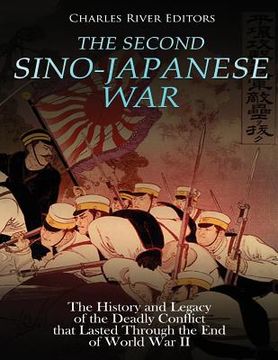The Second Sino-Japanese War: The History and Legacy of the Deadly Conflict that Lasted Through the End of World War II (en Inglés)
Reseña del libro "The Second Sino-Japanese War: The History and Legacy of the Deadly Conflict that Lasted Through the End of World War II (en Inglés)"
*Includes pictures *Includes contemporary accounts *Includes online resources and a bibliography for further reading Though both nations modernized, and China far outweighed Japan in terms of men and materiel potential, the island nation handily won its first modern war. The conflict resulted in Japan's short-term gains in the wake of victory, and the long term disaster for both sides' new roles in Asia, for with the end of Chinese dominance in East Asia came a new era for the region as a whole, an era whose consequences and horrors would not be fully realized for several more decades. Though scarcely mentioned in the world of early 21st century politics, Manchuria represented a key region of Asia during the first half of the 20th century. Once the heartland of the fierce Manchu empire, this northeastern Chinese region's rich natural resources made it a prize for nations in the process of entering the modern age, and three ambitious nations in the midst of such a transformation lay close enough to Manchuria to attempt to claim it: Japan, Russia, and China. For countries attempting to shake off their feudal past and enter a dynamic era of industrialization, Manchuria's resources presented an irresistible lure. With immense natural resources coupled to economic activity more concentrated than elsewhere in China, this region, abutting Mongolia, Korea, the Yellow Sea, and the Great Wall "accounted for 90 percent of China's oil, 70 percent of its iron, 55 percent of its gold, and 33 percent of its trade. If Shanghai remained China's commercial center, by 1931 Manchuria had become its industrial center." (Paine, 2012, 15). Thus, it's not altogether surprising that Japan's invasion of Manchuria in 1931 resulted from a long, complex chain of historical events stretching back to the late 19th century. Approximately 380,000 square miles in extent, or 1.4 times the size of the American state of Texas, Manchuria came into Imperial Russia's possession in 1900 due to the "Boxer Rebellion" in China, but the Russians held it only briefly; their defeat in the Russo-Japanese War shook loose their control from important parts of Manchuria by the end of 1905. The Kwantung Army deliberately shoved it over that brink in 1931, and the Japanese invasion and occupation of Manchuria is sometimes described as the true beginning of World War II. At the very least, it marked the expansion of Japan's imperial empire, its ongoing friction with China, and what would turn into a Chinese resistance campaign that would last nearly 15 years until the end of World War II. Given its importance, the invasion of Manchuria continues to be remembered as one of the seminal events of the 20th century. In 1937, the Empire of Japan once more went to war with China, a nation broken into petty warlord fiefdoms and wracked by civil war. The most modern Asian nation enacted a brutal campaign over the fragmented realms that made up China, committing atrocities just as horrendous as their Axis ally in Europe. Despite this, the sheer size of China, coupled with Japan's overextension, allowed the larger, less developed nation to endure. At the same time, China was experiencing an equally brutal civil war between Nationalist and Communist forces. This civil war became inextricably intertwined with the Second Sino-Japanese War and World War II, and the sheer scale of the horrors of the conflict remain hard to believe today, even as action in that theater is often overlooked because of events in Europe. The Second Sino-Japanese War: The History and Legacy of the Deadly Conflict that Lasted Through the End of World War II examines the notorious fighting, as well as the crucial aftermath. Along with pictures and a bibliography, you will learn about the Second Sino-Japanese War like never before.

